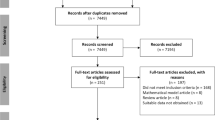Summary
Yellow-bellied marmots express considerable individuality as measured by behavior in a maze, mirror-image stimulation (MIS), and social behavior in the field. Maze behavior discriminated between residents and dispersers; residents explored the maze more widely than did dispersers. Males could not be distinguished from females nor survivors from non-survivors by their maze behavior. A group of six yearling females was established to examine the relationship between individual behavioral phenotypes (as determined by MIS) and social behavior in the field. This experiment provided a situation in which social behavior was not influenced by age, sex, or reproduction (female yearlings are non-reproductive). The number of social interactions per individual ranged from 25 to 69. The number of observed interactions per individual differend significantly from the expected for greeting, allogrooming, total amicable, play, and total social interactions. Rankings of greeting, total amicable, and total interactions were directly correlated with rankings on the “avoidance” axis; play was inversely correlated with the “approach” axis. These results suggest that marmots have individual behavioral phenotypes that are expressed in their social interactions with their conspecifics.
Similar content being viewed by others
References
Altmann J (1974) Observational study of behaviour: sampling methods. Behaviour 49:227–269
Altmann SA, Altmann J (1977) On the analysis of the rates of behaviour. Anim Behav 25:364–372
Armitage KB (1962) Social behaviour of a colony of the yellow-bellied marmot (Marmota flaviventris). Anim Behav 10:319–331
Armitage KB (1973) Population changes and social behavior following colonization by the yellow-bellied marmot. J Mammal 54:842–854
Armitage KB (1974) Male behaviour and territoriality in the yellow-bellied marmot. J Zool 172:233–265
Armitage KB (1975) Social behavior and population dynamics of marmots. Oikos 26:341–354
Armitage KB (1977) Social variety in the yellow-bellied marmot: a population-behavioural system. Anim Behav 25:585–593
Armitage KB (1982) Social dynamics of juvenile marmots: role of kinship and individual variability. Behav Ecol Sociobiol 11:33–36
Armitage KB (1984) Recruitment in yellow-bellied marmot populations: kinship, philopatry, and individual variability. In: Murie JO, Michicher GR (eds) Biology of ground-dwelling squirrels, University of Nebraska Press, Lincoln, pp 377–403
Armitage KB, Johns D (1982) Kinship, reproductive strategies and social dynamics of yellow-bellied marmots. Behav Ecol Sociobiol 11:55–63
Balfour AD (1979) Mirror-image stimulation as a behavioral profiling technique in Columbian ground squirrels. MS thesis, The University of Alberta, Edmonton
Bekoff M (1974) Social play and play-soliciting by infant canids. Am Zool 14:323–340
Bekoff M (1977) Mammalian dispersal and the ontogeny of individual behavioral phenotypes. Am Nat 111:715–732
Davies NB (1982) Behaviour and competition for scarce resources. In: King's college Sociobiology Group (ed) Current problems in sociobiology, Cambridge University Press, New York, pp 363–380
Downhower JF (1968) Factors affecting the dispersal of yearling yellow-bellied marmots (Marmota flaviventris). PhD dissertation, University of Kansas, Lawrence
Downhower JF, Armitage KB (1981) Dispersal of yearling yellow-bellied marmots (Marmota flaviventris). Anim Behav 29:1064–1069
Fairbairn DJ (1978a) Behaviour of dispersing deer mice (Peromyscus maniculatus). Behav Ecol Sociobiol 3:265–282
Fairbairn DJ (1978b) Dispersal of deer mice, Peromyscus maniculatus. Proximal causes and effects on fitness. Oecologia 32:171–193
Frase BA, Armitage KB (1984) Foraging patterns of yellow-bellied marmots: role of kinship and individual variability. Behav Ecol Sociobiol 16:1–10
Holekamp KE (1984) Dispersal in ground-dwelling sciurids. In: Murie JO, Michener GR (eds) Biology of ground-dwelling squirrels, University of Nebraska Press, Lincoln, pp 297–320
Maynard Smith J (1982) Evolution and the theory of games. Cambridge University Press, New York
Nowicki S, Armitage KB (1979) Behavior of juvenile yellow-bellied marmots: play and social integration. Z Tierpsychol 51:85–105
Rains DL (1979) Behavior of juvenile yellow-bellied marmots in two social environments. MS thesis, The Ohio State University, Columbus
Sadlier RMFS (1965) The relationship between agonistic behaviour and population changes in the deermouse, Peromyscus maniculatus (Wagner). J Anim Ecol 34:331–352
Sampson RJ (1975) Surface II graphics system. Kansas Geological Survey, Lawrence, pp 1–240
Siegel S (1956) Nonparametric statistics for the behavioral sciences. McGraw-Hill, New York
Slater PJB (1981) Individual differences in animal behavior. Perspect Ethol 4:35–49
Summerlin CT, Wolfe JL (1971) Social influences on exploratory behavior in the cotton rat, Sigmodon hispidus. Comm Behav Biol 6:105–109
Svendsen GE (1974) Behavioral and environmental factors in the spatial distribution and population dynamics of a yellow-bellied marmot population. Ecology 55:760–771
Svendsen GE, Armitage KB (1973) An application of mirrorimage stimulation to field behavioral studies. Ecology 54:623–627
Author information
Authors and Affiliations
Rights and permissions
About this article
Cite this article
Armitage, K.B. Individual differences in the behavior of juvenile yellow-bellied marmots. Behav Ecol Sociobiol 18, 419–424 (1986). https://doi.org/10.1007/BF00300516
Received:
Accepted:
Issue Date:
DOI: https://doi.org/10.1007/BF00300516




